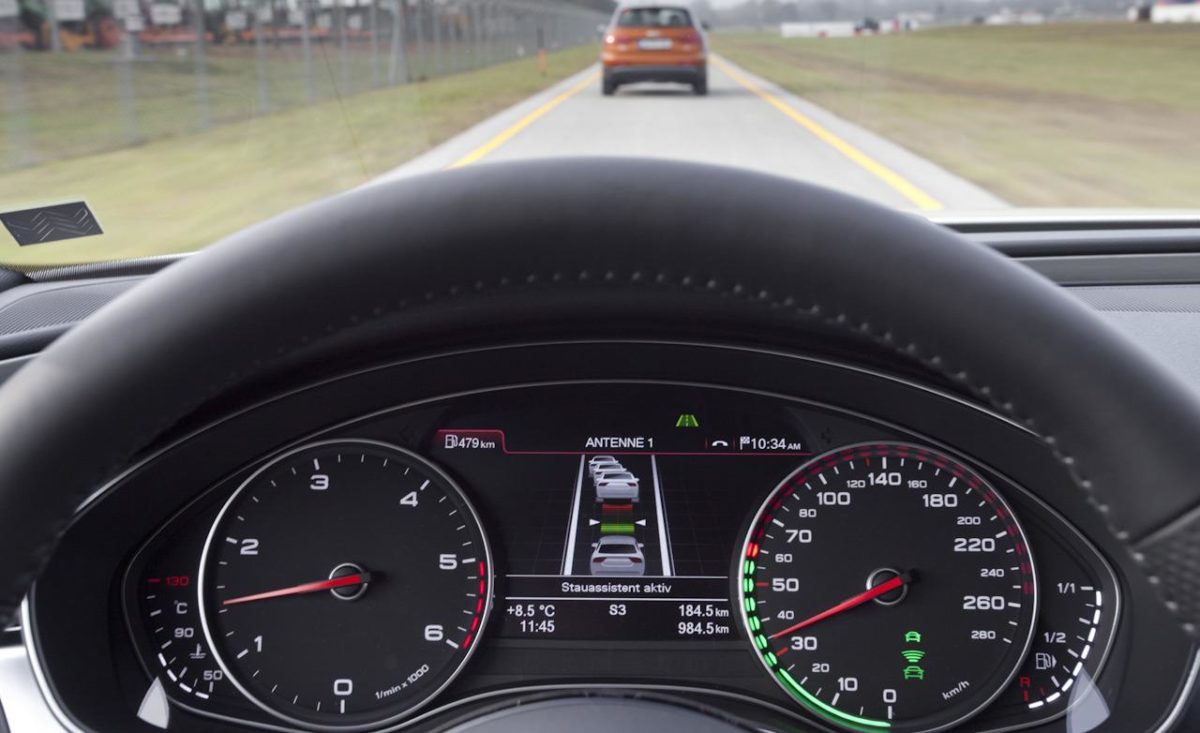Heads-Up Displays: Fighter jet technology in today's cars

Head-up displays (HUDs), which project vehicle speed and other information in the driver’s field of view, have been available since about 1990s on a small handful of luxury cars.
But with most of them based on basic LED technology of the time, information that could be displayed was limited at best. Cost, packaging, and reliability were also issues.
As automakers try to find new ways to reduce driving distractions in recent years, new LCD technology and cost reductions have allowed heads-up display systems to become more widespread like never before.
How it works
Fighter jets have used HUDs for years to keep vital information in front of pilots during combat situations. After all, keeping their eyes trained on the action in the heat of battle rather than on the cockpit instruments can mean the difference between life and death.
While a head-up display can take almost any form, the most common type in a car reflects its image directly off the windshield just below the driver’s line of sight. This is achieved by a special display integrated on the top of the dashboard and a specially coated windshield.
Just as in a jet fighter, the idea is that a head-up display helps the driver concentrate on what is happening on the road by displaying relevant information right in the driver’s line of vision.
What you get as you peer out past the steering wheel is a floating display with your speed and navigation directions. On some cars, the current audio playlist, collision warning and lane departure markings may also be displayed.
In fact, thanks to the move from LED icon-based displays to configurable LCD monitors, automakers can display just about anything.
Today, head-up displays are widely available in many models from luxury marques including Audi, BMW, Lexus, and also the Hyundai Equus. In this category, buyers demand technology and are willing to pay extra for it.
However in the last year or so, heads-up displays have also made it to lower-priced vehicles thanks to a few clever innovations by engineers.
BMW 3-series, 4-series, 5-series, 6-series, 7-series, X5, X6
BMW offers an advanced full-colour HUD system on many of their models. You can see your current speed, but the 3×6-inch colour display also shows vehicle warnings (such as lane departure and collision alert), the current setting for the adaptive cruise control, and turn-by-turn GPS navigation indicators. You can also bring up your current playlist, or see who is calling on your Bluetooth connected phone.
BMWs HUD will adjust automatically to current weather conditions due to an ambient light sensor. Via the vehicle’s iDrive interface, owners can further tweak the brightness level, position and rotation of the display, or even what information they want (or don’t want) to see.
Audi A6, A7, A8
Audi’s full-colour heads-up display recreates the display philosophy of their Multi-Media Interface.
The 3.41×10.31 inch display is based on the latest TFT LCD screen technology and backlit by 15 energy efficient white LEDs. Like BMW’s system, a sensor constantly measures ambient brightness in front of the vehicle and the system adjusts the light intensity so that the display can be read perfectly at all times day or night.
Drivers can select what information they wish to have shown via the MMI, including the speed, navigation symbols, and lists of infotainment systems and displays for the driver assistance systems.
Mazda3
HUDs are finding their way into more vehicles, including lower-priced ones such as the all-new 2014 Mazda3.
Mazda’s optional system, dubbed their “Active Driving Display” is the first Mazda product with such a system and is more compact than other HUDs out in the marketplace. Traditional HUDs wouldn’t fit in the Mazda3 due how much space they require.
The Active Driving Display doesn’t project onto the windshield but instead onto a pop-up semitransparent lens on the top of the dash in the driver’s field of vision. Despite being fitted to a lower-priced vehicle, the Mazda3’s system also projects speed, cruise control settings, driver assistance system warnings, and navigation info. However it is not a full-colour display unlike those from the German auto manufacturers.
One extra benefit to this setup is reduced repair costs if the windshield gets damaged. Why? Because traditional Heads-up display systems require a special reflective windshield coating for the information projected on them to be visible. If a stray rock damages the windshield in the Mazda, it won’t be as costly to fix as the car uses a normal windshield.
MINI Cooper
The all-new 2014 Mini Cooper Hardtop, boasts even more tech than its predecessor, including a heads-up display system.
Like Mazda’s system, the full-colour HUD is not projected onto the windshield surface but instead appears on a semitransparent lens atop the dashboard in the driver’s field of vision.
Turn-by-turn navigation graphics, current speed and speed limit information, safety system warnings can be displayed and seen quickly and conveniently without the driver having to take eyes off the road.

